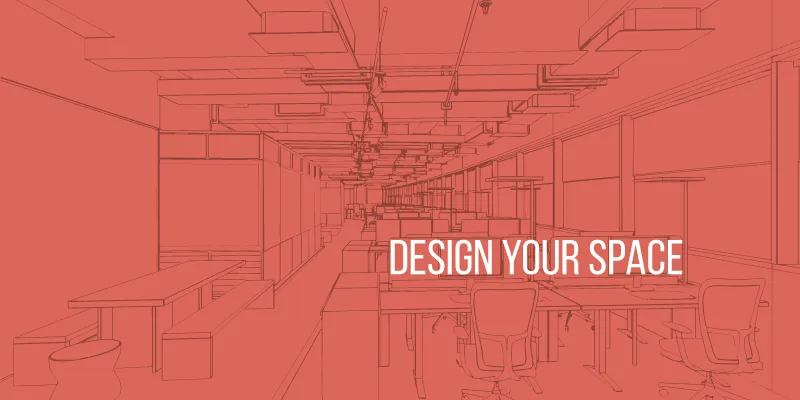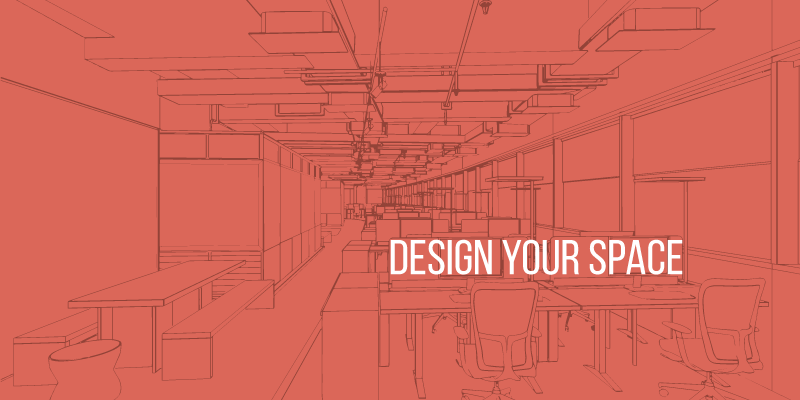How to design your home office to increase productivity
Many today, have the luxury of working from home. Of course there is no travel time, or dress codes, but it definitely doesn’t mean watching YouTube videos on loop in bed. In fact, it so much more difficult to focus and be productive when you work and live in the same space. As with going to the same office every day, monotony sets in when you work from home, too, and more so, because you have given up on your chance of packing your bag and getting a change of scene after a long day at work. This is why it is of supreme importance to designate different work spaces and living spaces at home.

While offices are designed on a large scale to provide a comfortable working atmosphere, it may turn out to be quite a task to design a home office that allows the same. So, how do you design your home office in a way that its mood and setting differs vastly from your living spaces? Here’s how:
Follow ergonomic rules
We spent a lot of time sitting at our desks every day, and the way we ‘sit’ and work can have a huge impact on our bodies. A study conducted by Institute of Work and Health among tax collectors working for the US state revenue department found that after receiving ergonomic training and an adjustable chair, they reported less soft-tissue injury and pain. Moreover, their productivity rose nearly 18 per cent over the year. So, it is important to invest in a good-quality, comfortable office furniture to avoid harmful conditions such as repetitive strain injuries and so on. Align your desk in a manner where the top of the computer screen is at eye level or a bit below that. A good test of this is to check where your address bar on the monitor is. Look straight, close your eyes and open it after a few seconds. The first thing your eyes should fall on is the address bar. Maintaining this height will avoid eye fatigue and keeps your eyes moist. Your shoulder should be relaxed, your feet should rest firmly on the floor (or a footrest) and your forearms should be parallel to the floor.
A good test of this is to check where your address bar on the monitor is. Look straight, close your eyes and open it after a few seconds. The first thing your eyes should fall on is the address bar.
Good lighting
In a study published in the Journal of Public Affairs, Administration and Management, it was found that the most important factors that affected the productivity of employees at work were light and the thermal environment of the workplace. Natural light is the best bet to liven up your home office. Make sure that you set your desk in a way as to let the maximum amount of natural light in. The best way is to put your desk close to a window as opposed to setting it against a wall. Place the desk parallel to the window panes as this will give you a good reason to turn away from your monitors every few minutes. If daylight is not available, use a combination of general and task lighting. Studies show that low lighting levels can lead to negative psychological effects like depression and even less sleep. Do not place overhead lighting directly above the monitor as it gives a glare and don’t put your screen right in front of a light source.
The best way is to put your desk close to a window as opposed to setting it against a wall. If daylight is not available, use a combination of general and task lighting.
Create a space to unwind
Don’t make the mistake of limiting your home office to just a desk at which you can sit and work. Create a small space – maybe a more comfortable chair with a foot rest – to spend short breaks or the more passive work hours in. It has been scientifically proven that taking short mental breaks during work can dramatically improve one’s ability to focus for longer periods. However, don’t make it so tempting that you would end up spending all your time curled up with a book in the chair or taking long naps, because unlike in offices, there is no one to monitor you at home.
Bring in some life
Having any element of nature in your workspace enhances the experience of being there, says design blogger and author Anne Sage. “These pieces ground us and keep us in touch with the larger purpose of our work,” she says. But if you think houseplants are too passé, Anne suggests going for anything natural like raw wood, crystals or even pets. The effectiveness of desk plants on the attention spans of workers has already been studied. Researchers at the Norwegian University of Life Sciences found that they have a “micro-restorative” impact and allows us to refresh our direct attention by shifting our minds to an effortless form of engagement. Take a cue from workplaces that encourage bringing pets to work to reduce stress levels and boost their productivity the next time you try to shoo away your furry friend from your home office.
“These pieces ground us and keep us in touch with the larger purpose of our work.” - Anna Sage, Design Blogger and Author.
Your home office should be an extension of your personality. It should make you feel refreshed and energised to work in. The space should make you focus on your work rather than distract you. At the end of a working day, you should be able to leave your home office feeling satisfied, accomplished and ready to relax.







